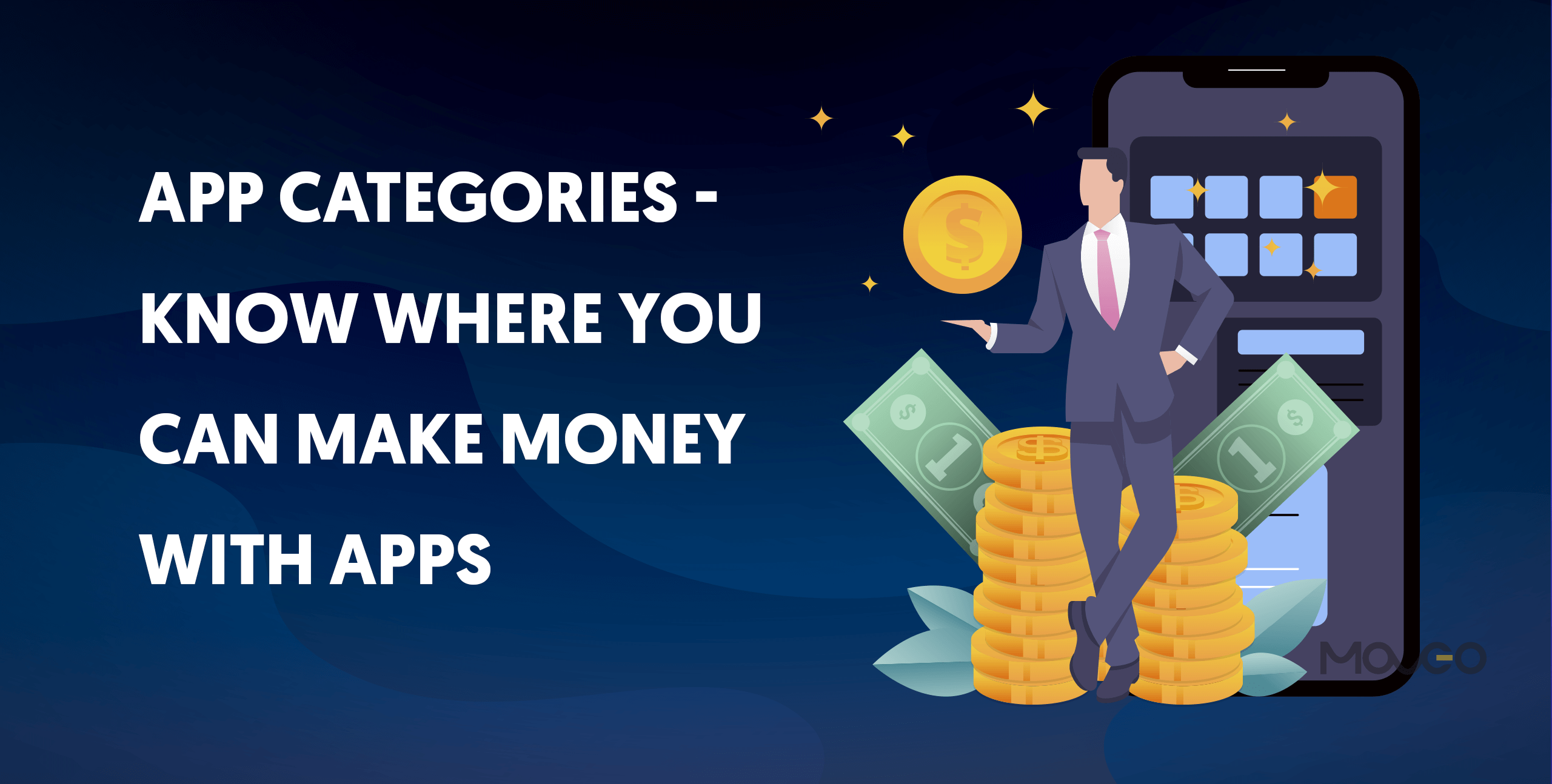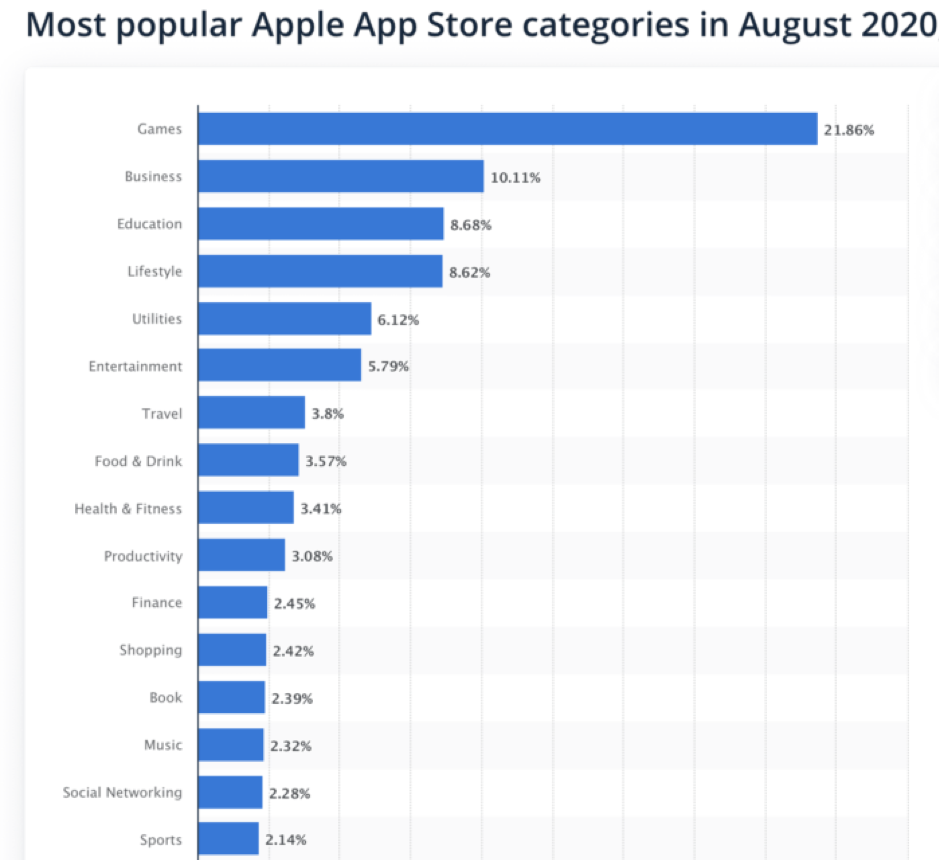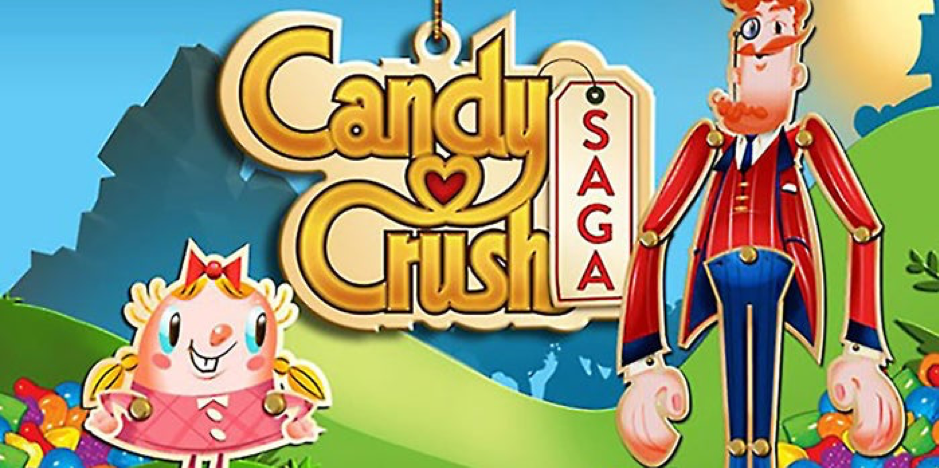Mobile apps are a way of life. Whatever you want to do, there’s an app for it. There being over 3 billion apps in the app stores today, classifying them into mobile app categories is crucial for discovery and understanding.
In this blogpost, we shall take a look at all the different types of apps to help you make informed decisions about how to develop apps that make money and how to market them effectively for maximum success.
Types of apps by technology
Mobile apps differ from each other based on the technology they are built with. The three primary classifications in mobile apps by their technology are – Native apps, Web apps and Hybrid apps. A fourth type – the PWA or progressive web apps – are another type of apps that started off as an advancement in web apps, but have now become a major category of their own. Let’s discuss each of these in detail.
Native Apps
The vintage gold standard in mobile apps – something that is of the highest quality and value but often gets replaced by a more cost effective, modern solution.
Native apps are written in a specific programming language that works on a specific operating system. So an Android app would be written in an Android language like Java or Kotlin. An iOS app would have to be written in Objective-C or Swift.
This means that for an app to work on Android as well as iOS devices, it would have to be coded two times over. This makes native app development a longer and more expensive process requiring a full team of iOS and Android developers.
However, at the end of this long process, you end up with an app that fits like a glove on the user’s device. It looks custom made (because it is), works flawlessly, integrates device hardware seamlessly and just provides an unmatched user experience.
Some of the most popular native apps are
Web Apps
Web apps are a type of apps that can be accessed over an internet browser. Once you enter the app, the browser interface disappears and the app covers the entire screen to provide an immersive experience.
The best thing about web apps is that they eliminate a crucial barrier – the installation step – encouraging more people to use the app without worrying about using up space on their device or even the simple reluctance to download yet another app.
As for development, web apps can be coded just once and used on any device with an internet connection. This makes web apps easier and more cost effective to develop.
As for a few disadvantages they have, web apps tend to have lesser features that native apps. They cannot work when the device is offline and being on the browser, they can potentially be exposed to more security risks than native apps.
Some examples of Web apps include
Hybrid Apps
Hybrid apps – as the name suggests – are a middle ground between native apps and web apps. They can be coded once and deployed on different operating systems. This is done by writing the basic code once and then customizing key front-end elements for each operating system separately. Modern cross-platform languages like React and Flutter can achieve up to 80% code reusability, allowing significant reduction in development times for hybrid apps.
Hybrid apps have significantly risen in popularity over the last few years and an increasing number of businesses need mobile apps to strengthen their digital business but do not wish to spend hefty amounts of money that native app development requires.
Hybrid apps offer a larger market appeal – Android, iOS and other OS devices, at a fraction of the cost of native app development. They also have shorter development cycles and faster time to market, all making them a luring prospect for app developers and business owners.
Hybrid apps offer rich, immersive user experiences and great functionality even at their lower price tag, making them a great business solution.
Hybrid apps however, may not be the best option for businesses that need a heavy-performance mobile app that needs to do a lot of work, handle big transactions, high traffic or high-definition media. Complex functions can slow down these apps and they tend to be less interactive.
Major examples of hybrid apps include
Progressive Web Apps – PWA
Progressive web apps or PWAs are mobile apps that work like an extension of a website accessed over a browser. These can be saved on your device, and used like an app, by simply storing a bookmark on your device.
As they are based in the web, they can be accessed on any device with any operating system, making PWAs an ideal solution for businesses that need a quick-fix to digital presence.
PWAs use APIs and browser functionalities to bring a native app like experience to users without taking up much space on their devise. They are more like a webpage that lives on your device and mimics an app like experience.
PWAs load up very quickly and take up very little bandwidth, making them immensely usable by all kinds of users, even those with slower internet speeds and limited data allowances. Also, they are automatically updated every time they are accessed, making them even more hassle free. No installation is required eliminating barriers to use and significantly increasing engagement.
As you can tell, PWAs offer enticing advantages for users, developers as well as business owners. They can have their share of shortcomings too. For instance, they cannot leverage all hardware features, have some problems with OS integrations and are susceptible to browser limitations.
Despite these, PWAs are a great solution for businesses that need quick working apps at lower cost and faster time to market.
Some prominent examples of progressive web apps are
Types of apps by categories
We now come to the fun part of app classification – app categories. Based on the work that they do, mobile apps are divided into different categories. Categories help users search for and download the right apps. That is why app stores distribute apps based on categories.
Knowing these categories is important so that you know which category to launch your app into. While it may seem like a no-brainer at first, many apps fall in the cusp of two categories and understanding your competition can help you choose the right category.
First, check out this chart from Statista. It shows the most popular app categories of 2020.
Gaming apps have remained at the top spot in most popular app categories for almost as long as there have been apps. Except of course the one rare time that educational apps took over and reigned at the top spot, as a result of the pandemic lockdowns and mounting relevance of online learning apps. More on that later.
Back to the point though, mobile app categories show us what the people are using apps for and what your users want. As you can see, people are using mobile apps for playing games, learning online, running a business, managing their finances, shopping, eating, health, social media, traveling and so much more.
Gaming Apps
The most popular app category by far is gaming apps. Whether users have a few minutes to kill on their commute or have an entire weekend of Fortnight marathon planned, gamers make for the lion’s share of app consumption. Developing a good game for mobile users is hence a heavily rewarding prospect for mobile app developers.
That said, the most popular mobile app category is gaming and it also comes with the obvious baggage of sky high competition. Over the years, gaming technology has grown by leaps and bounds, with games simulating near real-life experiences. Not only the most riveting storylines but also, modern gaming apps have lifelike graphics, high-definition visual effects, and rich feature sets. All of this is made possible by textbook-length code that involves multiple teams and millions of hours of effort.
Clearly, big rewards demand herculean efforts. If you can make the cut, mobile app games earn multi-million dollar revenues and popularity that often rivals NBA and Superbowl.
Candy Crush Saga made over $1 billion in sales in 2020. For a game with the simple ‘Match Three’ formula, that is a massive achievement. Over the years, it has earned over $5 billion. Candy Crush achieved this with phenomenal design, creative gaming curves and interaction with friends feature.
Top grossing mobile gaming apps include Honor of Kings grossing nearly $10 billion so far, Monster Strike – $9.2 billion, Pokemon Go – $6.4 billion and PUBG – $5.1 billion.
You see where I’m going with this right? There’s big money to be made in gaming apps as long as you’re ready to put in the effort.
Education Apps
You were waiting for this one right? Yes, there was a moment in time when David beat Goliath – or, an educational app took over gaming, social media and entertainment apps. For about a week in the August of 2017, Remind, a school communications app, climbed to the #1 spot on the most downloaded free iOS app chart.
It was a rare event to watch an educational platform steal the spotlight from popular media and entertainment apps that usually reign unequivocal on the charts. The development certainly highlights the potential that education apps hold in our world. There is a huge market for them, and dare we say, some much needed disruption is in order.
Premier education apps like Lynda.com, Udacity and Coursera have already shown the way when it comes to making impressive profits by providing quality educational material. Lynda.com was acquired by LinkedIn for a whopping $1.5 billion in 2015.
In India, the success of Byju’s – The Learning App speaks for itself. Grossing a humongous ₹100 Crores in monthly revenue as well as amassing a venerable reputation, Byju’s is an example of edtech at its best. As you can imagine, there is plenty of market need and opportunity here.
Social Media
The stars of this show need no introduction. Instagram, Twitter, Facebook, these are apps that have changed the way we talk, connect, make friends and even do business. Competing in this category may seem like a lost cause. Who could usurp the aforementioned stars, right?
However, Instagram did soar even though Facebook existed and allowed photo sharing long before.
In fact, Clubhouse – the newest kid on the social media block is stealing all the spotlight lately, thanks to a brilliant new spin, even though it is essentially a social media app.
So with enough determination and creativity, you could be the next star in the social media category, as long as you can bring likeminded people together and get them talking.
Business apps
Business apps is another popular mobile app category that spans a range of apps that help run a business more efficiently. These can be productivity apps, accounting apps, inventory apps, and many more. Any app that helps a business owner handle tedious jobs like billing, booking, tracking, selling or more can be called a business apps.
Business apps is another app category that saw massive surge in popularity during the Coronavirus outbreak. As people were staying home and working remotely, several mobile apps rose to prominence, aiding users manage businesses remotely. The previously unknown video conferencing app – Zoom became an overnight star.
Adobe Scan, Adobe Acrobat Reader, LinkedIn, Google Meet, Workday, Slack and a plethora of other business apps continue to be an essential toolset for running businesses successfully.
Finance Apps
People need to manage their wealth. And like everything else, they are turning to their mobile devices for that too. Finance apps allow users to easily manage their money without the ever hassled trip to the bank.
Banks and fintech startups are set to ride the digital wave as mobile apps are changing the way people spend and save their money. Mobile apps drove 45% more engagement in finance in 2020.
Everything from wallet apps, loans and other financial services, investing, peer-to-peer lending and other financial activities were increasingly performed on apps. In fact, participation in the share market grew 55% on mobile.
This is a critical insight for one of the most powerful industries of our world. Banks and financial institutions need to understand the shifting undercurrents and move from legacy models to digital transformation if they wish to fruitfully engage the mobile savvy young customers.
Mobile app developers need to analyse what makes users prefer mobile apps and leverage that knowledge to develop better, faster and more secure solutions.
Tools
Here’s an interesting mobile app category – tools. There are miscellaneous applications that help us in many general ways. To get things done easier or faster, tools are apps that save us time and effort. Automatic call recorders, calculators, converters, clocks, flashlight apps, antivirus apps, password managers and others are all mobile apps that fall under the category ‘Tools’ and perform those small but crucial tasks we need every single day.
Lifestyle apps
Lifestyle apps is an umbrella term for a few categories of apps including but not limited to Dating apps, Health and Fitness, Food, Travel, Music and more.
Tinder, Bumble and other dating apps have made waves as well as money in the last few years.
Health and Fitness apps rose to prominence during the pandemic. At-Home Fitness Apps Saw 30% Growth Taking Consumer Spend To $2 billion.
Travel apps are another extremely popular category. Apps like Tripadvisor and Holidify help users explore options and plan holidays. Trivago and Hotels.com help manage tickets and hotels bookings. Airbnb needs no introduction and a number of other apps help users make the most of their travels.
Music and Audio apps
Spotify, Soundcloud, Wynk and many more apps give us our daily fix of music. Working out, long drive or daily commute, music is more like an essential and music apps make it easy and convenient.
Plenty of apps stream billions of songs from all over the world for free, and offer additional features like offline downloads and special podcasts for an add-on monthly subscription fee.
There are audio apps besides music too. These include audiobooks apps like Audible, podcast apps like Stitcher and the newest sensation – Clubhouse. Clubhouse is a social audio app that allows users to talk, tell stories, develop ideas, deepen friendships and meet like-minded people. Its valuation stands at $4 billion as of December 2020, opening up new frontiers in audio apps.
Back to convention though, Spotify is the world’s most popular music streaming app, earning $10.8 billion in 2020. Clearly, people are paying for high quality music and here’s another app category worth exploring.
Communication
WhatsApp is used by approximately two billion monthly active users, outranking giants like Facebook Messenger and WeChat. All it does is send text messages and media – something that has been done on every mobile phone since long before. However, the ease and simplicity of WhatsApp is what makes it an absolute sweep.
Skype, Slack, Basecamp, and a number of other communication apps help individuals and businesses keep their communications clear and comfortable.
Entertainment
I got rid of my TV antenna 3 years ago. Some of my friends beat me to it. My point is, entertainment apps are the new normal. Amazon Prime, Netflix, Hulu, Disney+ and so many more – mobile apps for entertainment are ubiquitous today on every mobile device, smart TV and even laptops.
Shopping
Jeff Bezos recently spent $5.5 billion to take a space flight. He could afford that thanks to the mammoth that his online shopping company Amazon is. And today, there are many others like him. In fact every business, every shop around the corner, has an online shopping portal.
Ecommerce or mCommerce apps are extremely popular mobile app category and will continue to remain so for the foreseeable future. App Annie reports that global time spent in shopping apps on Android phones increased 30% YoY in 2020, with this number growing to 45% if you exclude China.
Conclusion
So those are the most popular mobile app categories. There are others too, but you now know what you’re dealing with. Choosing the right app category is important for success on app stores. It is in fact a key step in good App Store Optimization. Now that you have a good handle on the various types of mobile apps, you are ready to embark on your next app development project. Got an idea doing rounds in your head already? Get in touch with our experts and let us help you make it something wonderful.










